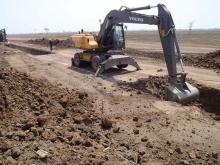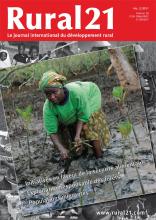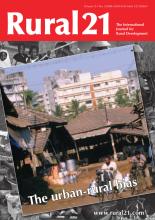Land Library Search
Through our robust search engine, you can search for any item of the over 73,000 highly curated resources in the Land Library.
If you would like to find an overview of what is possible, feel free to peruse the Search Guide.
/ library resources
Showing items 1 through 9 of 21.An analysis paper by Dustin Hoasa on the World Bank Group's lending practices, part 2 in Inclusive Development International (IDI)'s 'Outsourcing Development' series.
East–Southeast Asia is currently one of the fastest urbanizing regions in the world, with countries such as China climbing from 20 to 50% urbanized in just a few decades. By 2050, these countries are projected to add 1 billion people, with 90% of that growth occurring in cities.
This report summarises provisional results of Myanmar’s 2014 population and housing census. (Main census results released in May 2015.) The provisional results provide the total population by sex and administrative unit, from national, state/region, district down to township level.
Not only rabbits and guinea-pigs but sheep, goats, cattle and pigs also play a crucial role in the food and income situation of countless city-dwellers world-wide. However, when people and animals live in such close proximity, health risks are inevitable.
A discussion paper by Robyn Johnston, Michael Roberts, Thuon Try and Sanjiv de Silva on groundwater for irrigation in Cambodia, published by International Water Management Institute, Colombo, Sri Lanka, iDE Cambodia in June 2013.
An overview of the Asian Development Bank's Economic Cooperation program for the Greater Mekong Subregion, published in 2012.
L’urbanisation est souvent considérée comme ayant des effets néfastes sur le développement rural. En fait, c’est tout le contraire.
Rural development and urbanisation are often seen as competing, but in most cases are intimately linked. It is essential that policies re? ect and support the many positive links between rural and urban areas, enterprises and people.
The early development strategies of both China and India were urban- and industry-focused, discounting the importance of rural development. Despite sweeping reforms in both countries, the urban bias and subsequent spatial disparities still exist today.





